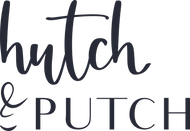Meanwhile there are seals for almost everything. These seals of quality are intended to give the buyer orientation by defining standards and benchmarks and thus making certain statements about the product. Our fabrics at hutch&putch are either GOTS or OEKO-Tex® certified. But what do these seals say? We clarify!

OEKO-Tex®
The OEKO-Tex® 100 standard guarantees that all components of a product are free of harmful substances. These include, for example, heavy metals or pesticides that could get into the raw materials during cultivation. This is especially important for products for babies and children, as contact with them can cause serious health problems.
The certification is carried out using a catalog of criteria that is updated at least once a year. That's why our products have to be re-certified every year, because this is the only way we can guarantee the highest possible level of security for you and your loved ones.
Stricter requirements apply to articles made from organic cotton, for example they may not be mixed with conventional cotton and may not contain any genetically modified (GMO) substances.
Our products are in product class 1 (of four ). That means they are also for babies and toddlers up to 36 months particularly suitable. Stricter criteria apply to them than to the other classes and they are also checked for salivation.

GOTS < /p>
GOTS stands for "Global organic textile standard", i.e. something like "Global biological textile standard". This is awarded to products that meet ecological and social criteria. All our muslin cloths are made from GOTS-certified fabrics.
Basically, the items must consist of at least 70% organically produced natural raw materials. Here, too, no harmful substances such as heavy metals, nickel or formaldehyde may be contained.
Not only the raw materials, but also the production conditions have to comply with strict specifications. The social conditions must adhere to the minimum criteria of the International Labor Organization (ILO) and the energy and water consumption must be documented at all stages of the supply chain in order to be able to make improvements .

Author: Isabell Gritzka




